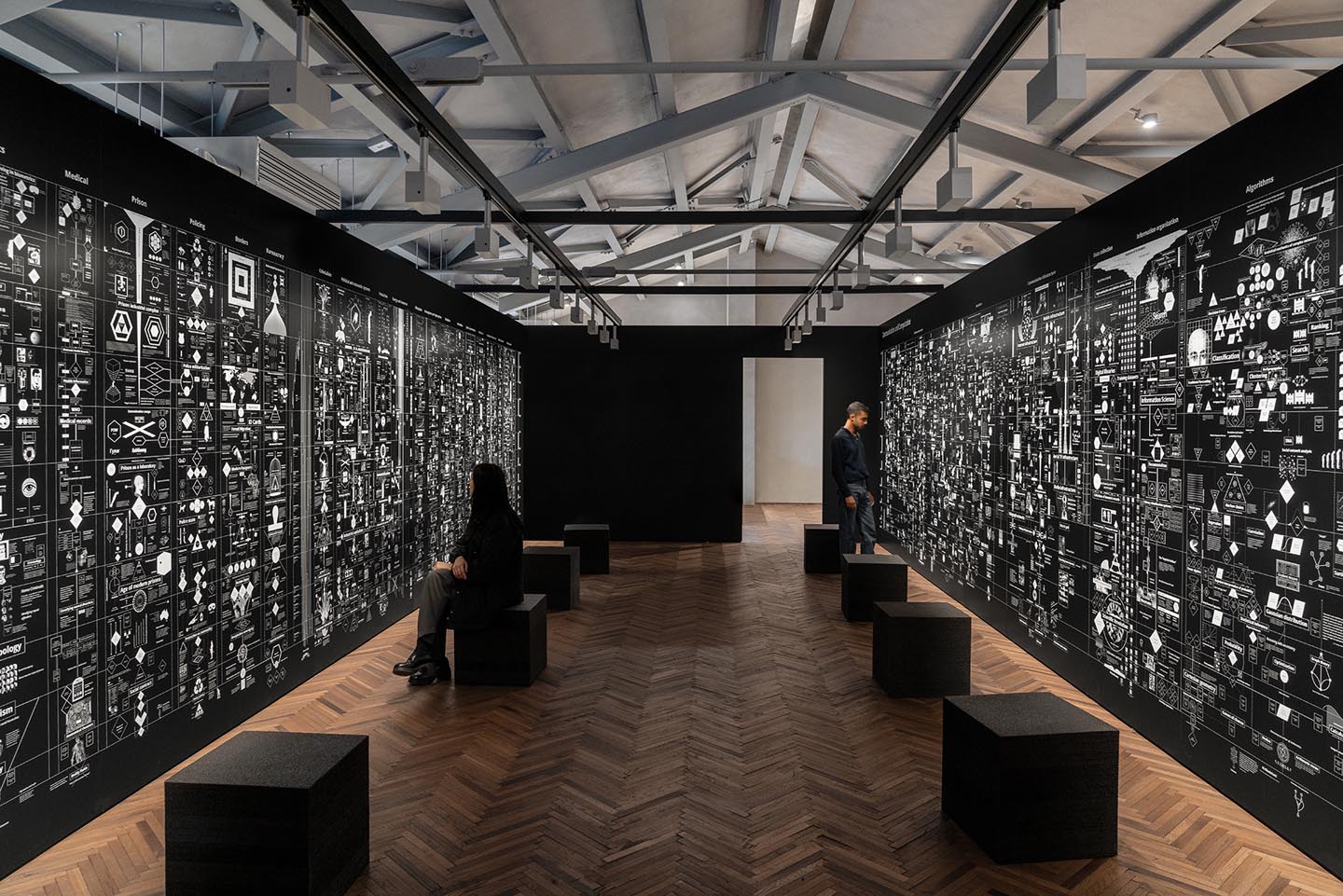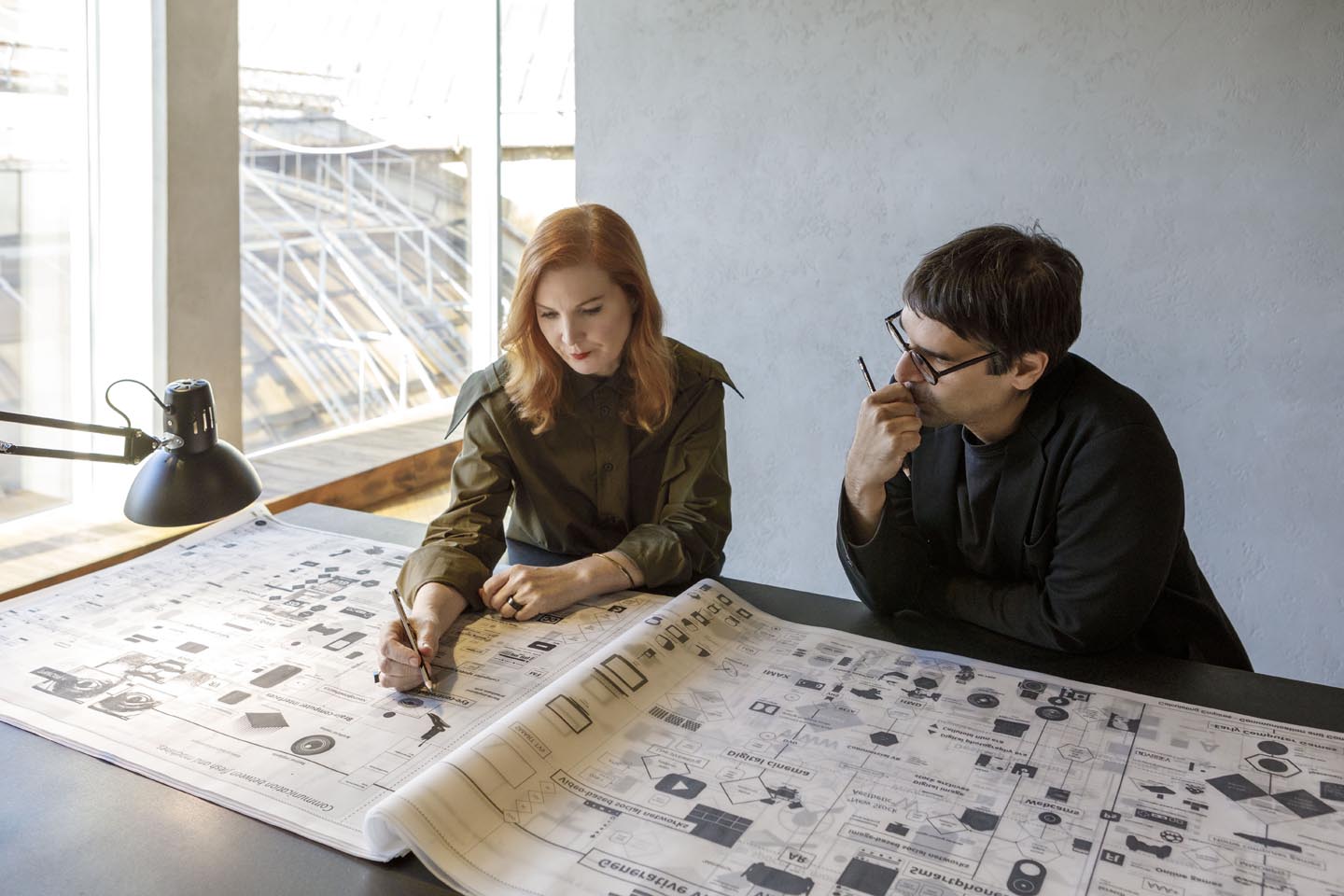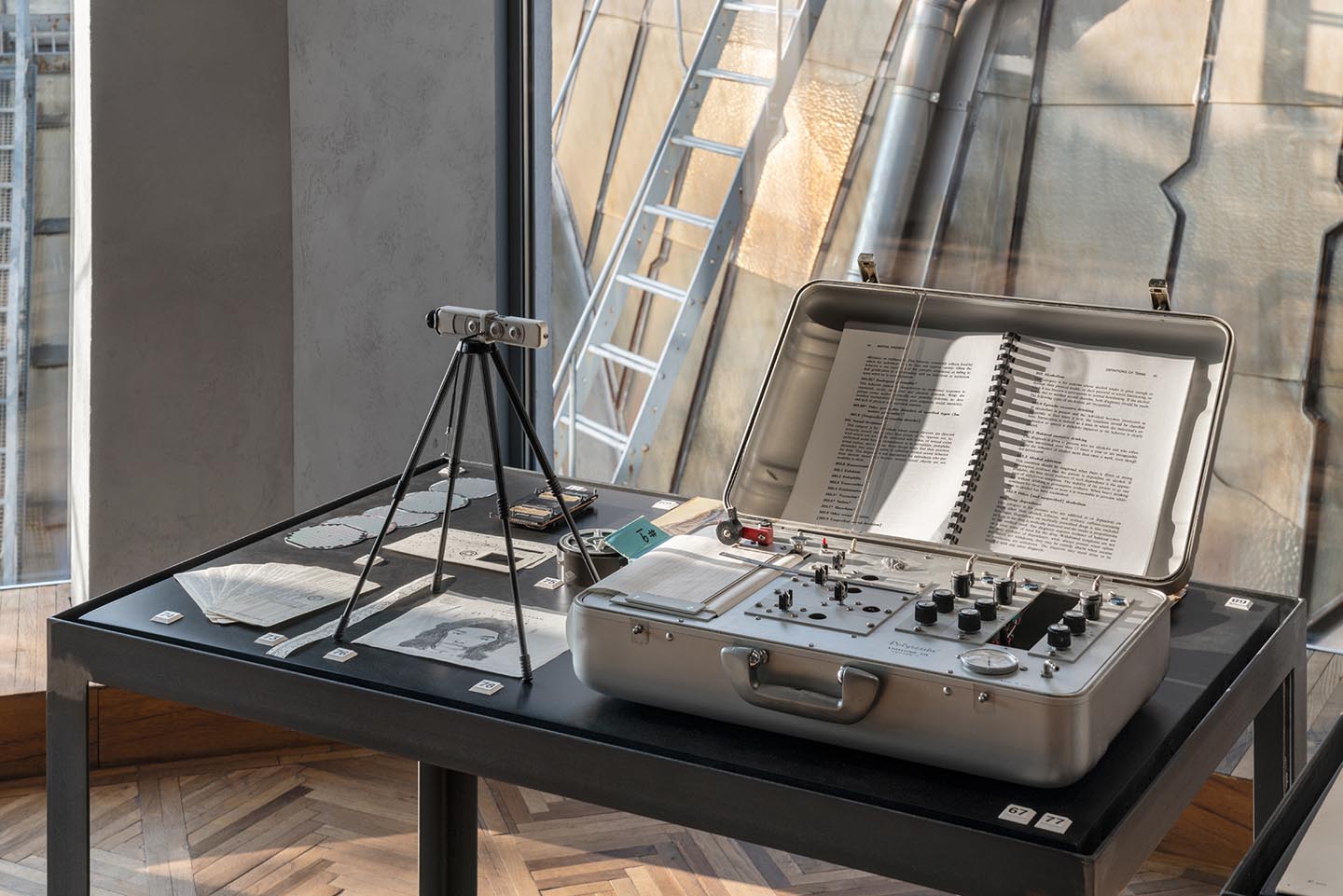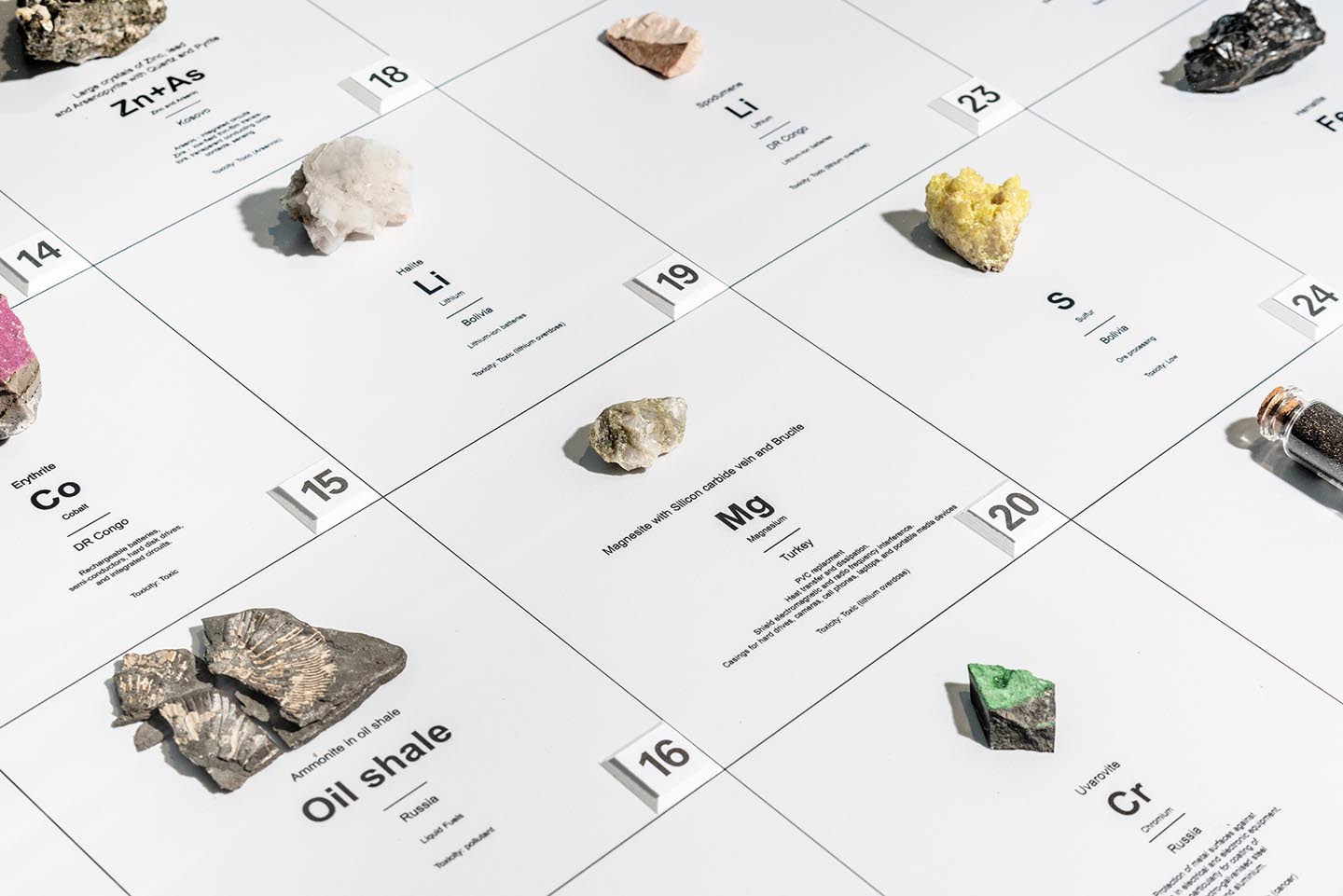At a time when international debate is focused on the AI Act, the exhibition Calculating empires: a genealogy of technology and power, 1500-2025, was held in Milan. It was curated by researchers Kate Crawford and Vladan Joler, who have been working on artificial intelligence for years. The exhibition, organised by Fondazione Prada and on display at the Galleria Vittorio Emanuele II Observatory, is a critical exploration of the power and influence of technology in human history, and an invitation to reflect on the complex and often obscure history behind contemporary technologies, exploring the political, social and environmental implications of their development and use.
Through a system of mapping and micronuclei exhibits, Calculating empires highlights the evolution of communication, computation and control systems. Detailed maps and diagrams illustrate how these have shaped and been the object of expansionist aims of economic empires over centuries, from 1500 to the immediate future.
A work on which the two researchers had previously collaborated opened the exhibition: “Anatomy of an AI System” is a work that sheds light on the ethical implications of the everyday use of AI devices using Amazon Echo as a case study. “Anatomy of an AI System” includes a map and an essay revealing the resources and work involved in the realisation of the intelligent personal assistant developed by the US company. Themes addressed by the exhibition include the impact on the ecosystem and the exploitation of natural resources necessary for the production of technologies. In connection with this, the series of minerals is carefully catalogued, providing their scientific names, geographical origin and application in high-tech industries. These are showcased as a symbol of the delicate balance between human progress and environmental sustainability.
 The use of diagrams makes it possible to point out nodes and interconnections, such as those between the geological extraction of minerals from the ecosystem and the extrapolation of data concerning the communication of users and consumers. This scientific-curatorial approach to the exhibition, which benefits from visual knowledge as both method and form, culminates in the map room on the second floor, where a diptych is set up in a dark, reflective space. The two maps, facing each other, are structured on the double axis of abscissas and ordinates, on whose planes the thematic areas and chronological development of structures and mechanisms for the coordination and management of information unfold respectively – from the Theory of Computation to the birth of biometrics. The two maps mirroring each other, reminiscent of Hungarian artist Agnes Denes’ works Introspections I and Introspections II, diagrammatic works conceived in the early 1970s to trace a visual history of the evolution of human intelligence and technology from its origins to the present day, propose an updated version, reaching up until 2025, of communication and control models and systems.
The use of diagrams makes it possible to point out nodes and interconnections, such as those between the geological extraction of minerals from the ecosystem and the extrapolation of data concerning the communication of users and consumers. This scientific-curatorial approach to the exhibition, which benefits from visual knowledge as both method and form, culminates in the map room on the second floor, where a diptych is set up in a dark, reflective space. The two maps, facing each other, are structured on the double axis of abscissas and ordinates, on whose planes the thematic areas and chronological development of structures and mechanisms for the coordination and management of information unfold respectively – from the Theory of Computation to the birth of biometrics. The two maps mirroring each other, reminiscent of Hungarian artist Agnes Denes’ works Introspections I and Introspections II, diagrammatic works conceived in the early 1970s to trace a visual history of the evolution of human intelligence and technology from its origins to the present day, propose an updated version, reaching up until 2025, of communication and control models and systems.
 Through their graphic presentation, the two curators propose a long-term reading of the phenomena of artificial intelligence without claiming to be exhaustive. On the contrary, at the end of the exhibition, visitors are free to include their experiences and opinions in the Calculating empires volume, which has been specially conceived to accommodate revisions and complications, in the knowledge that the phenomenon of artificial intelligence and the many dynamics and facets concerning it are in constant development and transformation.
Through their graphic presentation, the two curators propose a long-term reading of the phenomena of artificial intelligence without claiming to be exhaustive. On the contrary, at the end of the exhibition, visitors are free to include their experiences and opinions in the Calculating empires volume, which has been specially conceived to accommodate revisions and complications, in the knowledge that the phenomenon of artificial intelligence and the many dynamics and facets concerning it are in constant development and transformation.
Calculating Empires. A Genealogy of Technology and Power, 1500–2025, curated by Researcher-artists Kate Crawford e Vladan Joler
Osservatorio Fondazione Prada, Milan, November 23, 2023–January 29, 2024
images: (cover) Exhibition view of «Calculating Empires», Researcher-artists Kate Crawford e Vladan Joler, Osservatorio Fondazione Prada, Milan, ph: Piercarlo Quecchia – DSL Studio / @piercarloquecchia – @dsl__studio Courtesy: Fondazione Prada Kate Crawford e / and Vladan Joler, Anatomy of an AI System: The Amazon Echo as an Anatomical Map of Human Labor, Data and Planetary Resources, 2018. [mappa /map] (2) Exhibition view of «Calculating Empires», Researcher-artists Kate Crawford e Vladan Joler, Osservatorio Fondazione Prada, Milan, ph: Piercarlo Quecchia – DSL Studio / @piercarloquecchia – @dsl__studio Courtesy: Fondazione Prada (3) Exhibition view of «Calculating Empires», Researcher-artists Kate Crawford e Vladan Joler, Osservatorio Fondazione Prada, Milan, ph: Piercarlo Quecchia – DSL Studio / @piercarloquecchia – @dsl__studio Courtesy: Fondazione Prada (4) Exhibition view of «Calculating Empires», Researcher-artists Kate Crawford e Vladan Joler, Osservatorio Fondazione Prada, Milan. Photo: Piercarlo Quecchia – DSL Studio / @piercarloquecchia – @dsl__studio Courtesy: Fondazione Prada. Kate Crawford e / and Vladan Joler, Calculating Empires: A Genealogy of Technology and Power, 1500-2025, 2023 (5) Fondazione Prada – Cate Crawford – Vladan Joler, ph Patrick Toomey Neri











































